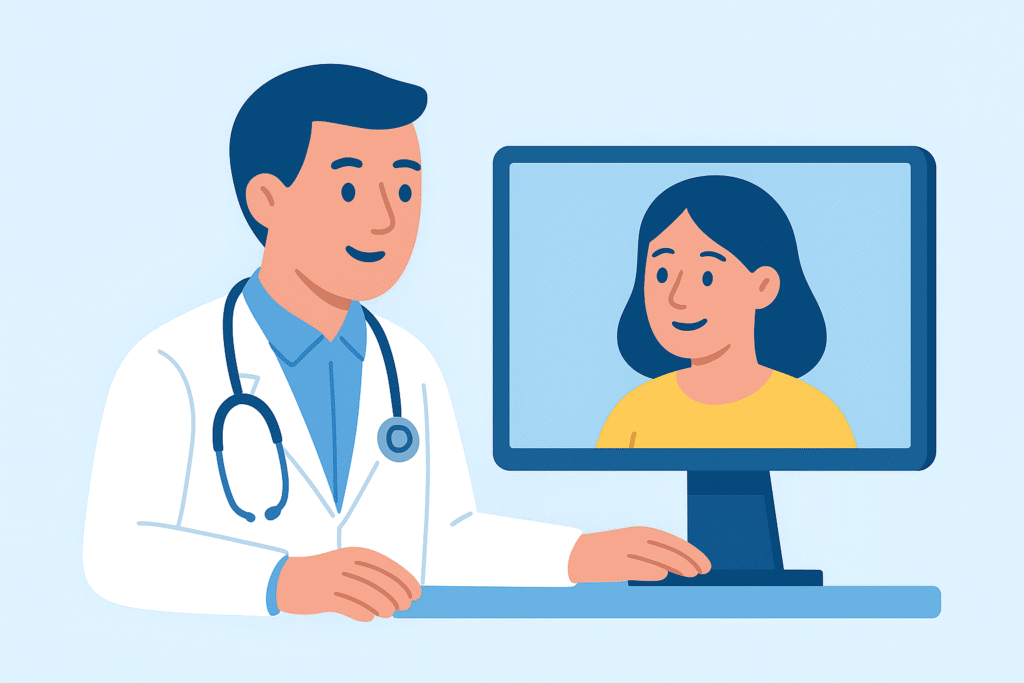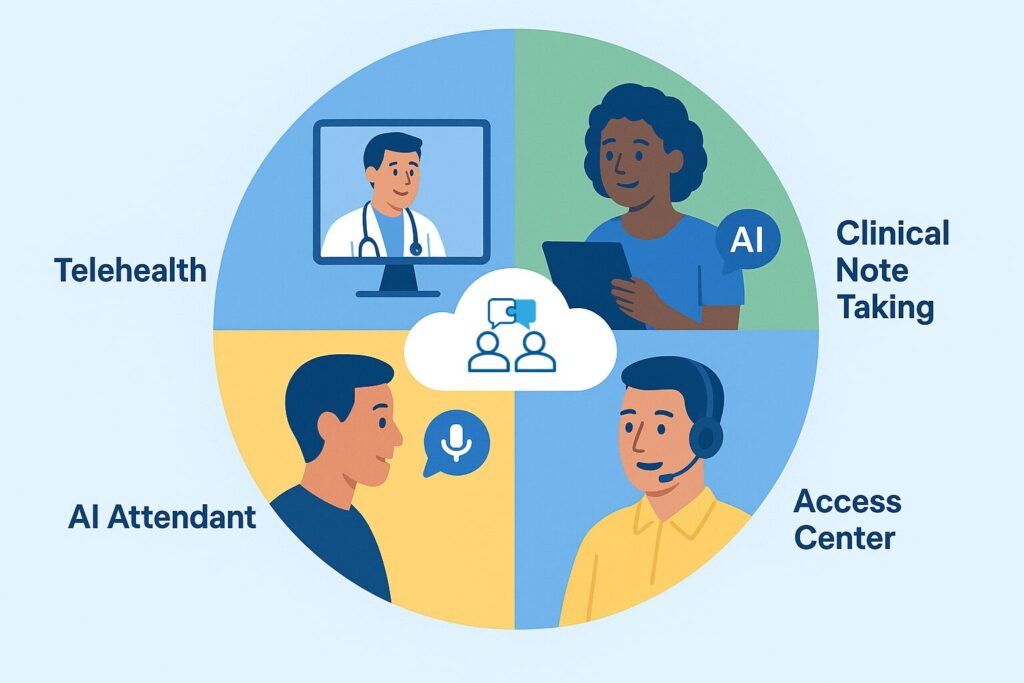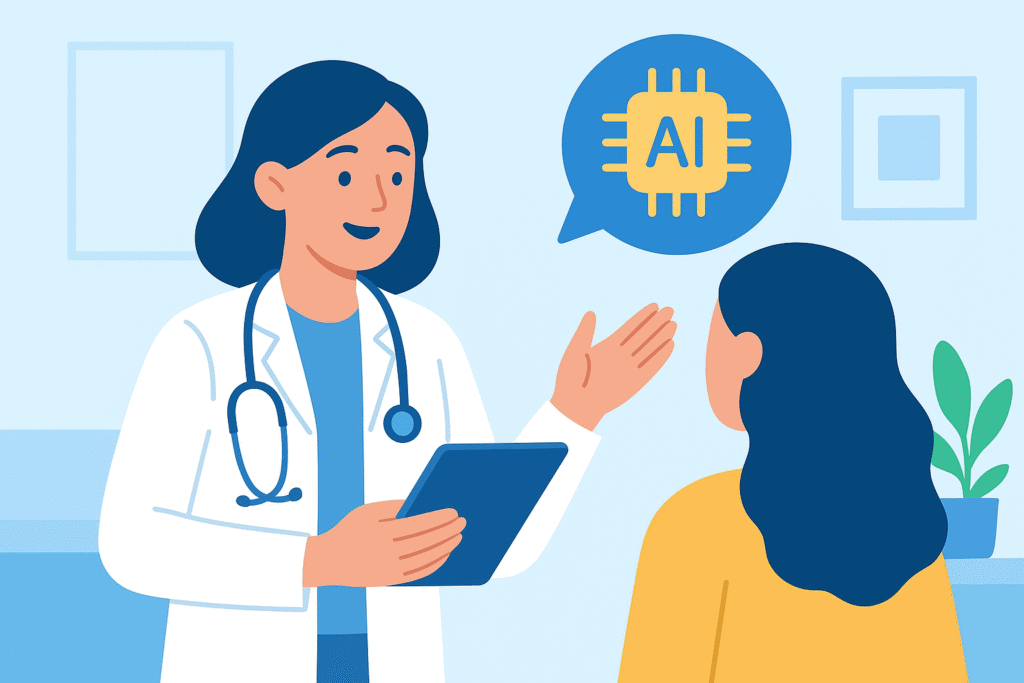Blog: Cloud Communications in Healthcare
Delivering a Better Experience for Patients and Staff
The healthcare industry continues to evolve rapidly, driven by patient expectations, new care delivery models, and the increasing importance of digital engagement. Cloud communications platforms are at the center of this transformation, enabling healthcare providers to improve access, streamline workflows, and deliver better patient outcomes. This is all done while maintaining strict compliance with privacy and security standards.

Four Ways Cloud Communications Can Empower Healthcare
1. Telehealth: Removing the Barriers of Distance
Telehealth adoption skyrocketed during the pandemic and continues to grow as patients expect convenience without sacrificing quality of care. Cloud-based communications eliminates the barriers of distance and physical location, allowing providers to deliver care virtually with secure video consultations, remote monitoring, and digital follow-ups.
Patients gain the ability to connect with physicians from their homes, while providers can extend their reach to underserved or rural populations. Cloud platforms like Zoom for Healthcare and RingCentral offer HIPAA-compliant solutions designed specifically to meet these needs, ensuring secure, high-quality interactions across devices.

2. Tools for Clinicians: AI-Powered Documentation
One of the biggest pain points for healthcare providers is the administrative burden of documentation. In fact, one study found that physicians spend almost twice as much time on paperwork compared to patients. Cloud communications providers are now integrating AI-powered tools that can listen to local or telehealth conversations, automatically generating clinical notes and even entering details directly into EHR forms.
By reducing time spent on paperwork, clinicians can focus more on patients, leading to greater satisfaction and improved care delivery. AI-driven transcription and summarization also minimize the risk of errors, ensuring more accurate record-keeping and streamlined workflows.3. Centralized Access Centers: A Modern Front Door
Healthcare organizations are increasingly creating centralized, omnichannel “Access Centers” that act as the first point of contact for patients. Built on modern contact center technology, these hubs triage incoming voice and digital contacts, schedule appointments, route inquiries to nurse groups, and provide patients with a seamless experience regardless of how they reach out.
Omnichannel support—spanning phone, web chat, SMS, and email—ensures patients can connect on their preferred channel. Cloud communications unifies these touchpoints, empowering healthcare providers to reduce wait times, improve patient navigation, and create a consistent experience across the board.
When seamlessly integrated with Electronic Health Records (EHRs), these systems can automatically update patient records, capture communication histories, and provide clinicians with the most up-to-date information. This not only streamlines workflows but also enhances care coordination, reduces administrative overhead, and ensures that every interaction contributes to a more complete patient profile.
4. AI-Enhanced Speech Attendants and Language Services
Reaching the right department or specialist shouldn’t require long hold times or confusing menus. AI-powered virtual speech attendants allow patients to simply state their need and be intelligently routed to the right place—whether scheduling, billing, or clinical staff.
Additionally, AI-enabled translation and accent normalization tools ensure clear communication, helping providers serve patients across diverse populations and reduce misunderstandings. This not only improves accessibility but also enhances patient trust and satisfaction.
HIPAA Compliance and the Importance of a BAA
While the benefits of cloud communications in healthcare are clear, compliance is non-negotiable. Any provider using these technologies must ensure HIPAA compliance, including the use of strong encryption, secure data storage, and detailed audit trails.
Equally important is the Business Associate Agreement (BAA), which legally binds cloud communication providers to safeguard Protected Health Information (PHI). Leading platforms like Zoom for Healthcare and RingCentral offer BAAs as part of their service, giving providers confidence that their communications environment is secure and compliant.

Conclusion
From Telehealth to AI-driven clinician support, centralized access centers, and intelligent speech attendants, cloud communications are reshaping the patient and provider experience in healthcare. By adopting platforms designed with compliance at their core, healthcare organizations can unlock new efficiencies, expand access to care, and deliver better outcomes—while ensuring the highest standards of privacy and security.

